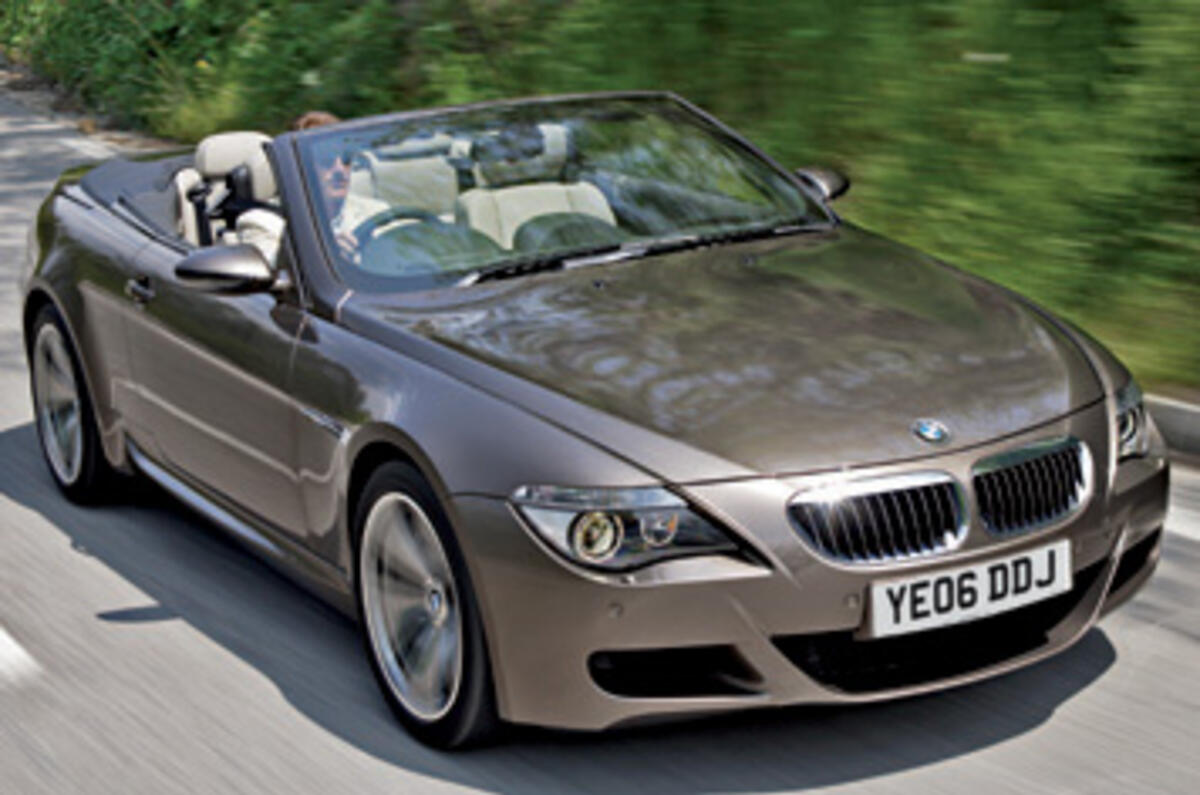What's new?
There's one thing above all else that will make you want to get your backside into BMW’s new M6 cabriolet: the sound of its V10 when its complex fabric hood is stowed away behind the rear seats. A mesmerising combination of intense mechanical activity, blaring induction noise and tuneful exhaust resonance, it is downright delicious. Once sampled, you’re hooked.What's it like?
The naturally aspirated 5.0-litre V10, lifted directly from the M6 coupé with a solid 500bhp and 384lb ft of torque, completely dominates the driving experience. To fully appreciate its acoustic qualities, you’ll want to drop back a couple of gears before nailing the throttle long and hard. The resulting scream – loud enough to turn pedestrians’ heads as the seven-speed sequential manual gearbox heartily blips the throttle on the downchange – is about as close as you’ll come to the searing shrill of an F1 car on the road.
Acknowledging that it lacks the outright dynamic capability of the coupé, BMW contends that the more forgiving qualities of the M6 cabriolet will see it appeal to buyers who may never have contemplated an M-car before. The reasoning is simple. Serious drivers will opt for the faster, sharper and cheaper coupé. Those looking to impress their neighbours will prefer the cabriolet.
At 2005kg, the rag-top weighs a hefty 220kg more than its hard-top sibling. That’s more than a 10 per cent gain, signalling that performance will suffer with the loss of the roof.
Not that it is obvious from behind the wheel. With the engine delivering such a memorable soundtrack and a constant rush of wind over the top of the windscreen serving to stir the senses when the roof is stowed away, any deficit in straight-line speed is hard to detect. BMW claims the M6 cabriolet will hit 62mph in just 4.8sec – 0.4sec slower than the coupé – while the standing kilometre time is put at a very healthy 22.9sec and the 50-75mph fourth-gear split takes just 4.7sec.
Handling is remarkably good. There’s real balance and proper levels of feedback, although the active steering system remains too light at high speeds. There are moderate levels of roll when you push hard in corners, but while it’s terrifically well controlled, you quickly become aware that the stability and traction control systems are working harder than in the coupé. Meanwhile, added compliance in the suspension makes for a more refined ride, making it a better long-distance proposition than the coupe.
Reinforcement has been concentrated in all the usual areas to compensate for the loss of the roof. But in an effort to lift dynamics a notch further, BMW has developed a further series of strengthening procedures, including additional bracing within the sills, bulkhead and suspension.
The multi-layer roof is familiar enough, being brought over without any significant change from the 6-series cabriolet. The work of German specialist Edscha, it is brilliantly engineered with fast-acting automatic operation and, in response to customer demands, has been programmed to operate at speeds up to 30km/h. The whole operation takes 22sec.Should I buy one?
It’s hard not to like the M6 cabriolet. It’s fast, handles with the kind of determination not often found in open-top cars, looks good in a bullish kind of way, is fully loaded, seats four with plenty of space for luggage, and sounds better than just about any other car on the road. In the end, however, it’s hard not to conclude that it lacks the intrinsic qualities of the very best M-cars. It’s an exclusive toy for the rich that, while carrying some of the same raw ingredients, is bettered in almost every area by the more focused M6 coupé.











Add your comment